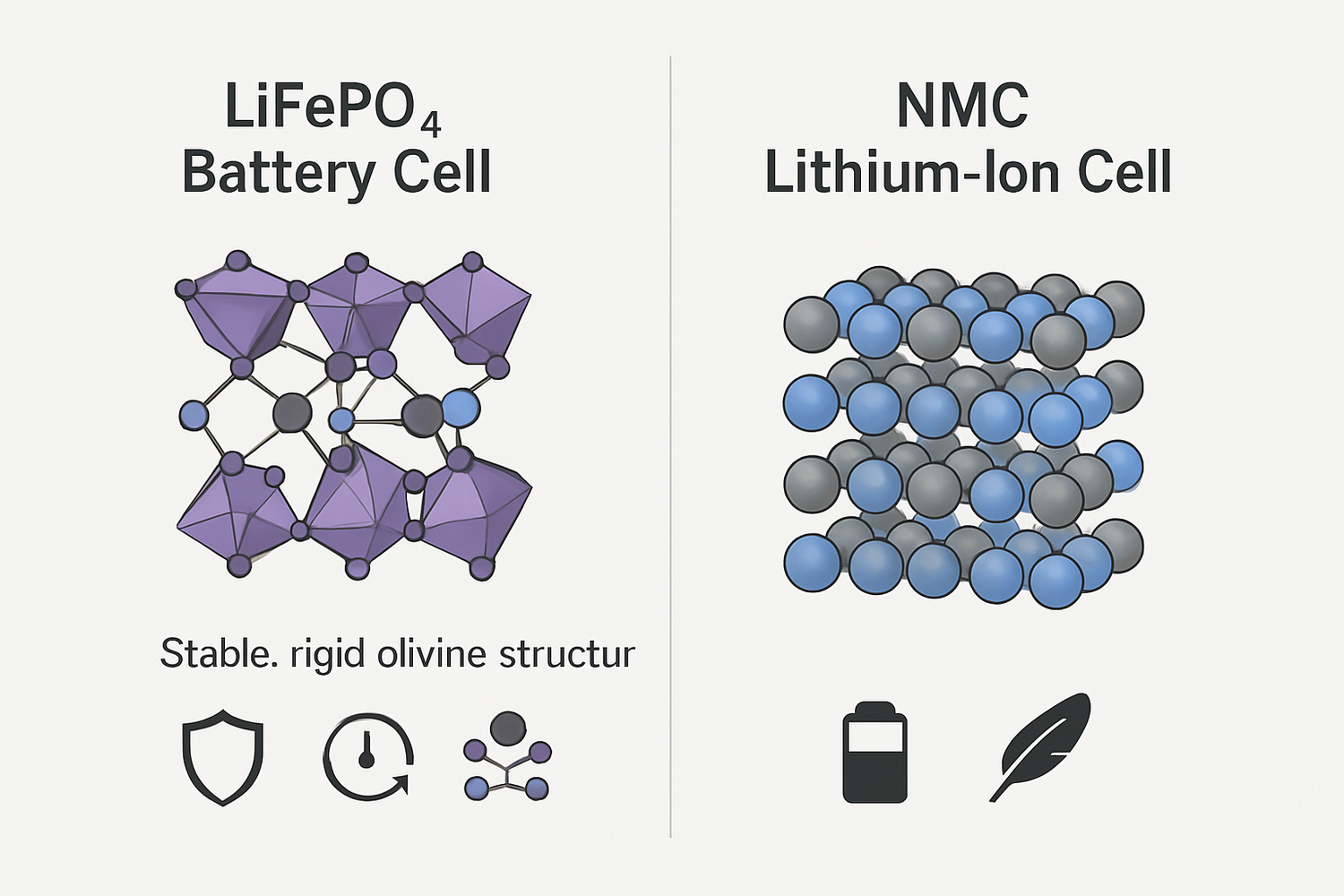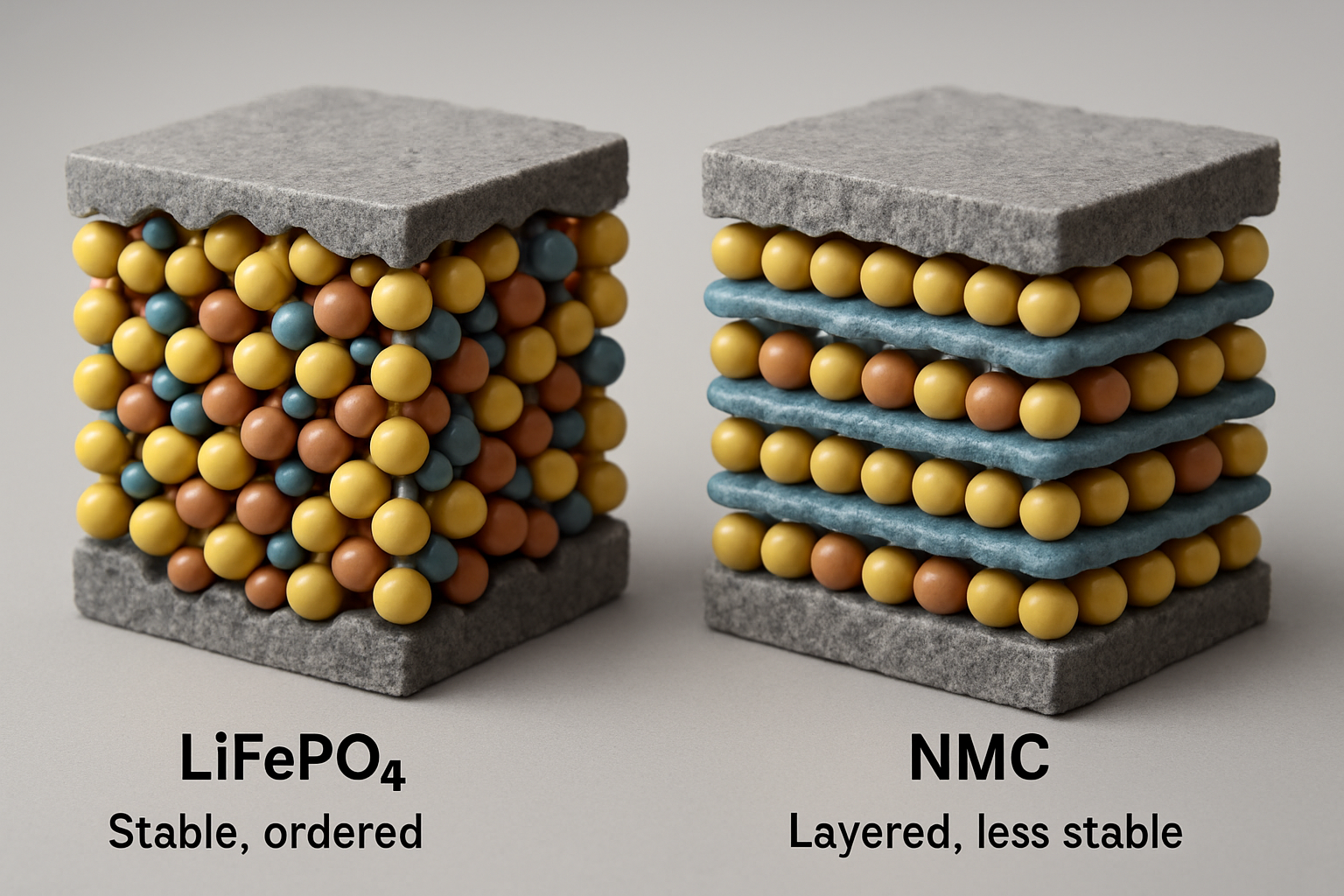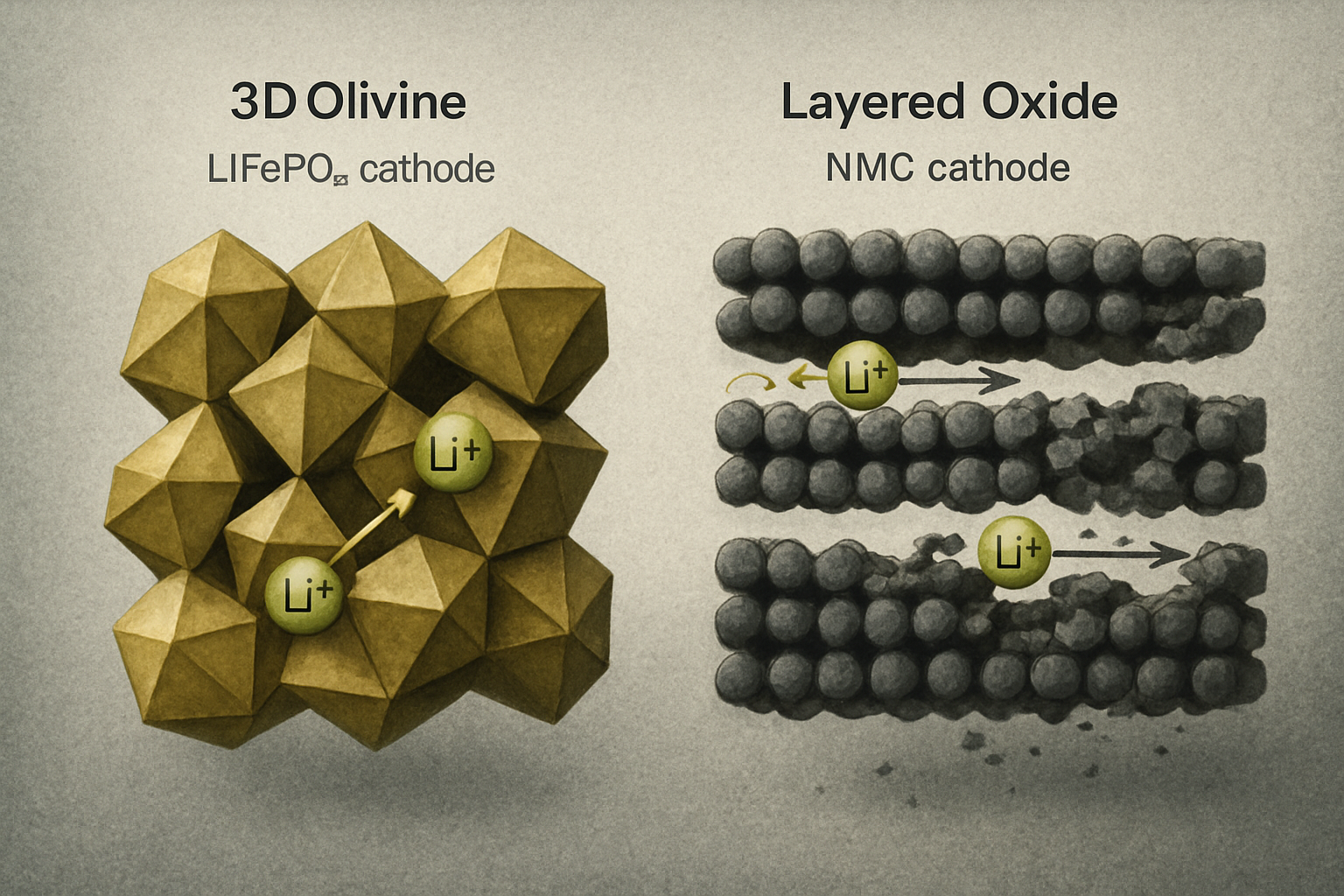Choosing the right battery for a solar energy storage system is a critical decision. The market is filled with options, primarily revolving around two types of lithium chemistry: Lithium Iron Phosphate (LiFePO4) and other lithium-ion variants like Nickel Manganese Cobalt (NMC). Unfortunately, common myths and outdated information often cloud the decision-making process, leading to costly and potentially unsafe choices. This analysis dispels five persistent myths to provide clarity for your energy independence goals.
Myth 1: All Lithium-Ion Batteries Are Fundamentally the Same
A frequent oversimplification is treating 'lithium-ion' as a single category. In reality, it is a family of different chemistries, each with distinct characteristics. The choice of materials, particularly for the cathode, dramatically alters a battery's performance, lifespan, and safety profile.
Understanding the Chemical Differences
The core distinction lies in the cathode material. A LiFePO4 battery uses lithium iron phosphate, a remarkably stable compound. Other common lithium-ion batteries, such as NMC or Lithium Cobalt Oxide (LCO), use metal oxides that are more energy-dense but less stable. The strong covalent P-O bond within the phosphate crystal structure of LiFePO4 is much harder to break down under stress compared to the bonds in metal oxides, which is a key factor in its superior safety.
Impact on Performance and Safety
This chemical stability directly translates to enhanced safety. LiFePO4 batteries have a much higher thermal runaway threshold, the point at which a battery overheats uncontrollably. They can typically withstand temperatures up to around 270°C before this occurs, whereas NMC batteries may enter thermal runaway at temperatures as low as 150°C. This makes LiFePO4 chemistry inherently safer for a home battery storage system, where it operates unattended for years.
Myth 2: LiFePO4 Batteries Are Too Expensive
The initial purchase price of a LiFePO4 battery can be higher than some other lithium-ion alternatives. This sticker price often leads to the mistaken belief that they are not a cost-effective option. This perspective ignores the most important metric: the total cost of ownership (TCO) over the battery's entire life.
The Upfront Cost vs. Total Cost of Ownership
A battery's true value is measured by how much energy it can deliver over its lifetime. LiFePO4 batteries excel in longevity, typically offering 3,000 to 10,000 charge cycles, whereas many standard lithium-ion types offer only 500 to 2,000 cycles. This means a LiFePO4 battery can last several times longer, eliminating the need for costly replacements. When you factor in lifespan, the long-term investment is often significantly lower.
| Feature | LiFePO4 Battery | NMC Lithium-Ion Battery |
|---|---|---|
| Upfront Cost | Moderate to High | Moderate |
| Cycle Life (at 80% DoD) | 3,000 - 10,000+ cycles | 1,000 - 2,000 cycles |
| Lifespan (Daily Cycling) | 10 - 20+ years | 3 - 6 years |
| Total Cost of Ownership | Lower | Higher (due to replacements) |
Calculating the Levelized Cost of Storage (LCOS)
A more advanced way to assess cost is the Levelized Cost of Storage (LCOS), which calculates the cost per kilowatt-hour of energy discharged from the battery over its lifetime. Due to its vastly superior cycle life, a LiFePO4 battery consistently demonstrates a lower LCOS. As organizations like the International Renewable Energy Agency (IRENA) have noted, falling battery costs are making technologies with longer lifespans increasingly accessible and economically sensible for stationary storage.
Myth 3: Higher Energy Density Is Always Better
Energy density—the amount of energy stored per unit of weight or volume—is often highlighted as a key performance indicator. NMC and other lithium-ion batteries generally have a higher energy density than LiFePO4 batteries. This has led to the myth that they are inherently superior.
Energy Density vs. Application
High energy density is critical for applications where space and weight are the primary constraints, such as in smartphones or electric vehicles. A lighter, smaller battery allows for a longer range or a more compact device. However, these priorities are different for a stationary home energy storage system.
Why Stability Matters More for Stationary Storage
For a solar energy storage system installed in a home or business, the most important attributes are safety, reliability, and lifespan. A slightly larger or heavier battery is an insignificant trade-off for a system that will not catch fire and will last for over a decade. The robust and stable nature of a deep cycle lithium battery using LiFePO4 chemistry is far more valuable in this context than shaving off a few kilograms or inches.
Myth 4: LiFePO4 Batteries Perform Poorly in the Cold
A kernel of truth fuels this myth: all battery chemistries experience reduced performance at low temperatures due to slowed electrochemical reactions. Some have pointed to this as a significant drawback for LiFePO4 technology, suggesting it is unsuitable for colder climates.
Acknowledging Temperature Sensitivity
It is true that charging a LiFePO4 battery below freezing (0°C or 32°F) can cause damage. However, this is a characteristic of most lithium-based batteries, not a unique flaw of LiFePO4. The concern is not about general use but specifically about charging in sub-zero conditions.
Modern Solutions and Management Systems
Modern, high-quality LiFePO4 battery packs are engineered to overcome this limitation. They are equipped with a sophisticated Battery Management System (BMS) that actively monitors cell temperatures. The BMS will automatically prevent charging if the temperature is too low, protecting the battery from damage. Advanced models designed for cold climates also incorporate built-in heating elements that warm the cells to a safe temperature before charging begins, ensuring reliable year-round operation.
Myth 5: Safety Concerns Are Exaggerated
News stories of lithium-ion battery fires in phones or electric vehicles have made some consumers wary of having a large battery system in their homes. This has led to a counter-myth that all modern batteries are equally safe and that the risks are overstated.
The Reality of Thermal Runaway
Thermal runaway is a dangerous chain reaction where a battery cell overheats, causing a fire that generates its own oxygen, making it extremely difficult to extinguish. This is a real risk, particularly with energy-dense chemistries like NMC, which can release oxygen from their cathodes during decomposition, fueling the fire. While safety features can mitigate this risk, the underlying chemical instability remains.
The Inherent Safety of LiFePO4 Chemistry
LiFePO4 chemistry provides a fundamental safeguard against this danger. Because of its stable olivine structure, the battery does not release oxygen, even under extreme abuse such as overcharging or physical puncture. This prevents the self-fueling fire characteristic of thermal runaway. According to the U.S. Department of Energy, modern battery systems must meet stringent safety standards, and choosing a chemistry with inherent stability is a key part of that safety equation. For an application as critical as home energy storage, this superior safety profile is non-negotiable.
Making an Informed Decision for Your Energy Needs
Understanding the facts behind these myths is crucial for making a sound investment in your energy future. While other lithium-ion chemistries have their place, LiFePO4 technology offers a superior combination of safety, longevity, and long-term value for solar energy storage. By prioritizing total cost of ownership over upfront price and safety over marginal gains in size, you can build a reliable and durable system. For a deeper analysis of how these factors influence real-world performance, the data in our Ultimate Reference for Solar Storage Performance provides valuable insights into efficiency and output.
Frequently Asked Questions
What is the main difference between LiFePO4 and other lithium-ion batteries?
The primary difference is the cathode material. LiFePO4 uses lithium iron phosphate, which is exceptionally stable, safe, and offers a very long cycle life. Other lithium-ion batteries, like NMC, use metal oxides that provide higher energy density but have lower thermal stability and a shorter lifespan.
Is a LiFePO4 battery worth the extra initial cost?
For stationary applications like home solar storage, the answer is almost always yes. Its vastly longer lifespan—often 5 to 10 times more cycles—and superior safety result in a lower total cost of ownership, making it a smarter and more economical long-term investment.
Can I use any lithium-ion battery for my solar energy system?
While other batteries can be used, LiFePO4 is specifically suited for the demands of solar energy storage. Its ability to handle deep, repetitive cycles daily without significant degradation, combined with its unmatched safety profile, makes it the ideal choice for reliable, long-term performance in a home environment.
How does temperature affect a LiFePO4 battery?
Performance can decrease in extreme cold, as with any battery. However, modern LiFePO4 batteries are managed by a BMS that prevents charging in freezing temperatures to avoid damage. Many premium models also include self-heating functions to ensure they operate safely and effectively even in colder climates.





Leave a comment
All comments are moderated before being published.
This site is protected by hCaptcha and the hCaptcha Privacy Policy and Terms of Service apply.